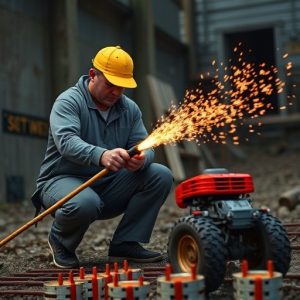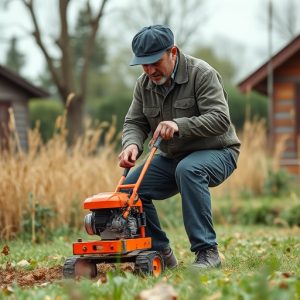Kubotan vs Pocket Stick: A Comparative Guide to Their Martial Arts Applications and Usage
The Kubotan and pocket stick are self-defense tools that martial artists use for enhanced striking …….
The Kubotan and pocket stick are self-defense tools that martial artists use for enhanced striking precision and control. A Kubotan, about 5 to 8 inches long with a substantial diameter, serves as an extension of the hand, allowing for powerful strikes targeting pressure points. Mastery of the Kubotan involves learning to apply it correctly under the guidance of an experienced instructor, integrating it into a range of offensive maneuvers through consistent practice. It's designed for discreet carry and is particularly effective in close-quarters combat due to its compact size, enabling focused pressure on sensitive areas. The pocket stick, while longer and thinner than the Kubotan, is also mastered through specialized training, offering advantages in fluid motion and weapon disarmament scenarios. Both tools require a deep understanding of their capabilities and application within the legal frameworks governing self-defense. Users should train with these weapons to effectively deploy them in self-defense situations, considering their personal proficiency and the context in which they might be used. The choice between using a Kubotan or a pocket stick depends on individual preferences, self-defense requirements, and environment factors. Regular training and situational awareness are crucial for both tools' effective use in real-life defense scenarios.
When it comes to self-defense tools, the Kubotan and pocket stick are two popular options that offer unique advantages for martial artists. This article delves into the nuances of each, providing insights on how to use a Kubotan effectively through expert guidance. We’ll explore the key differences between these tools, their applications in various martial arts disciplines, and the techniques that make them indispensable for self-defense. A comparative analysis will highlight the advantages and disadvantages of each weapon within training and real-world self-defense scenarios. Whether you’re a seasoned practitioner or new to the art, understanding the Kubotan versus a pocket stick can elevate your self-defense skills.
Understanding the Kubotan: A Comprehensive Guide on How to Use It Effectively
The Kubotan is a versatile self-defense tool that has gained popularity among martial artists and civilians alike for its effectiveness in various combat scenarios. It is a short, thick stick with a blunt end, designed to be used as an extension of the hand and fingers, thereby amplifying the force of strikes and control techniques. To wield the Kubotan effectively, one must first understand its anatomy and potential applications. The Kubotan’s length typically ranges from 5 to 8 inches, and its diameter is substantially sized to be gripped firmly by the hand. When integrating the Kubotan into your self-defense repertoire, it’s crucial to practice with it regularly to become comfortable with its handling and the various strikes it can facilitate.
Mastering the use of a Kubotan involves a combination of strikes, blocks, and control maneuvers. For instance, the Kubotan can be used to deliver powerful strikes to vulnerable areas such as nerves and joints. The blunt end is ideal for this purpose, as it concentrates force without the sharpness that might lead to unintended injury or legal complications. Additionally, the Kubotan’s design allows for precise application of pressure in self-defense situations. For example, it can be used to control an assailant’s wrist or arm, rendering them incapacitated. To use the Kubotan effectively, one must also learn to integrate it with striking and kicking techniques, creating a cohesive and dynamic defensive strategy. Proper training is essential for both safety and proficiency, ensuring that the Kubotan becomes an extension of the user’s intention and skill set. Regular practice under the guidance of a qualified instructor will solidify one’s ability to use the Kubotan confidently and competently in self-defense scenarios.
Kubotan vs Pocket Stick: Key Differences and Their Martial Arts Applications
The Kubotan and the pocket stick are self-defense tools that have distinct features and martial arts applications. The Kubotan, invented by Master Frank A. Otatsu Sensei as a training aid for karate practitioners, is a short, dense stick with a rounded end. It is designed to fit into the hand or between the fingers, allowing users to practice striking techniques while promoting a strong, defensive grip. How to use a Kubotan effectively involves understanding its role in pressure point application and as an extension of one’s arm for strikes. In martial arts like Aikido, Judo, and Karate, the Kubotan is used to simulate and enhance striking power, improve technique accuracy, and teach the user about the effects of impact on various body parts.
In contrast, the pocket stick is a more recent development, designed for ease of carry and use. It is typically longer than the Kubotan and thinner, making it less conspicuous when carried in a pocket or bag. The pocket stick’s application in martial arts such as Kali, Eskrima, and Arnis emphasizes fluid motion, weapon disarmament techniques, and the use of leverage to control an opponent’s weapon hand. Users learn how to use a pocket stick by mastering its balance and length advantages, which can be employed to deflect attacks, redirect force, and create distance from an assailant. Both tools require specialized training to use effectively in self-defense scenarios; they are not toys or substitutes for skillful martial arts practice but rather complementary aids that can enhance one’s self-protection abilities when used appropriately within the context of trained techniques.
Mastering Techniques with a Kubotan for Self-Defense
Mastering the Kubotan for self-defense involves understanding both its potential and the techniques required to effectively use it. The Kubotan is a short, thick stick of variable length, often with a cap on one end. It’s designed to extend the range and power of hand techniques, providing users with a versatile tool for personal protection. Proficiency in Kubotan self-defense comes from rigorous practice and familiarity with its unique applications. For instance, the Kubotan can be used to deliver powerful strikes, execute joint locks, and neutralize an attacker with precision and control. Training should focus on developing a strong grip, as this allows for better manipulation of the device and ensures that it remains an extension of the hand rather than a separate weapon. Additionally, learning to use the Kubotan in conjunction with traditional martial arts strikes can create effective self-defense maneuvers that might not be possible with bare hands alone.
Advanced techniques with the Kubotan involve targeting vulnerable areas of an assailant’s body, such as pressure points and joints, to incapacitate them without causing unnecessary harm. A well-placed strike can disrupt an attacker’s balance or cause significant pain, effectively deterring aggression. To master these techniques, practitioners should engage in realistic drills that simulate self-defense scenarios, adapting their responses to a range of potential threats. This dynamic training ensures that users are prepared to react appropriately in situations where their safety or the safety of others is at stake. It’s also crucial to understand the legal implications and limitations of using a Kubotan, ensuring its application aligns with self-defense laws in your jurisdiction. Regular practice and staying informed about the legal context will help users confidently and effectively employ the Kubotan in real-life defense situations. How to use a kubotan effectively is not just about learning techniques but also about integrating them into one’s overall self-defense strategy, which includes awareness, evasion, and decision-making under pressure.
Comparative Analysis: Advantages and Disadvantages of Using a Kubotan Versus a Pocket Stick in Training and Self-Defense Scenarios
When considering self-defense tools, the Kubotan and pocket stick are two popular choices among practitioners. Both serve as extensions of the hand and finger, allowing for targeted strikes that can incapacitate an attacker. The Kubotan, a compact, pen-like weapon, is designed to deliver precise and powerful blows. Its tapered design enables users to apply pressure to nerves and joints with greater precision, making it an effective tool in close-quarters combat. Training in the use of a Kubotan involves understanding its proper application, including the angle and force required for effective self-defense maneuvers. The advantages of using a Kubotan lie in its portability—it can be easily concealed—and the finesse it requires to execute techniques, which can lead to improved hand-eye coordination and precision striking. However, the small size of the Kubotan might make it less suitable for situations where a more forceful defense is needed against larger or multiple attackers.
In contrast, the pocket stick is a longer, thinner tool that provides reach and leverage in self-defense scenarios. It can be effectively used as both a striking instrument and a control device, offering versatility in its application. The pocket stick’s length allows for keeping potential assailants at bay and can be a deterrent due to its intimidating presence. Its advantages include the ability to maintain distance from an aggressor and the capacity to apply greater force and cover more area with each strike. However, the pocket stick is generally larger and less concealable than the Kubotan, which might limit its utility in environments where discretion is key. Additionally, the user must be adept at managing the longer length and potential for wider swing arcs to effectively wield a pocket stick. Both tools require dedicated practice to master their use; training should focus on the appropriate techniques, legal considerations, and situational awareness to employ them effectively in self-defense situations. Understanding the distinct advantages and disadvantages of each tool will guide practitioners in choosing the most suitable self-defense weapon based on their specific needs and circumstances.


